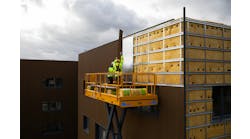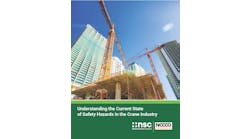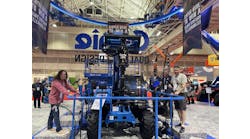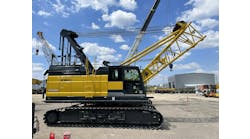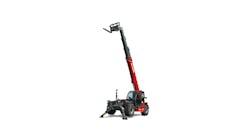When you think of scaffolding, think of safety first.
Scaffolding is a versatile product that can be highly profitable if used and rented properly. Unfortunately, many contractors complain about the stringent safety requirements of the Occu-pational Safety and Health Administration.
But noncompliance can cost you an arm and a leg - literally. It's also important to recognize that these rules were put into place to reduce the number of fall-related injuries.
Safe scaffolding starts at the rental counter, where most end-users look to the counter people for advice. Thus, it is important that all employees are properly trained about using scaffolds and are aware of current OSHA scaffolding standards.
Three basic types of steel scaffolding are being manufactured in the United States: frame scaffold, tube and clamp scaffold, and system scaffold. In line with OSHA standards, these scaffolds should be designed, constructed and loaded following a design made by a qualified or certified individual.
If your employees are not certified to resolve scaffolding questions, enlist the help of a scaffolding manufacturer who can provide computer-aided drawings and erection layouts that meet OSHA regulations. Soliciting such advice also can free you to become involved in more complex scaffolding projects.
Start by making the manufacturer a part of your team to prevent scaffolding accidents and to ensure your customers' safety. Take advantage of extra services manufacturers can offer. Most can provide a dimensional layout of the scaffold, a detailed list of equipment and material, and engineering and technical support.
Working hand-in-hand with a scaffold manufacturer is simple, provided you have complete details such as blueprints and photos. It is also important to know the type of work the contractor will do, as well as ground conditions, the number of work levels and whether the scaffold is mobile or stationary.
Here are a few questions you should ask the contractor:
* What type of scaffolding is needed? Is it frame scaffold, tube and clamp scaffold, or system scaffold/shoring?
* What type of structure will be scaffolded?
* What are the height, width, length and diameter of the structure to be scaffolded? Will the scaffold be used inside or outside the structure?
* How close will the scaffold need to be to the structure?
* Will the scaffold be enclosed?
* What size of bracing is needed for the scaffold?
* Will the contractor work off side brackets? If so, how many levels of side brackets will be required?
* Will the scaffold be free-standing or mobile?
* Will stair or ladder access be needed?
* How many working levels will be required?
* What type of planking is preferred (wood, aluminum or steel decking)?
* What type of work will be done on the scaffold (masonry, plastering, painting or HVAC)?
* On what ground condition will the scaffold sit?
Where scaffolding is concerned, common sense is a valuable tool. Ask the contractor and the manufacturer as many questions as possible to ensure a safe scaffold and a successful project.
